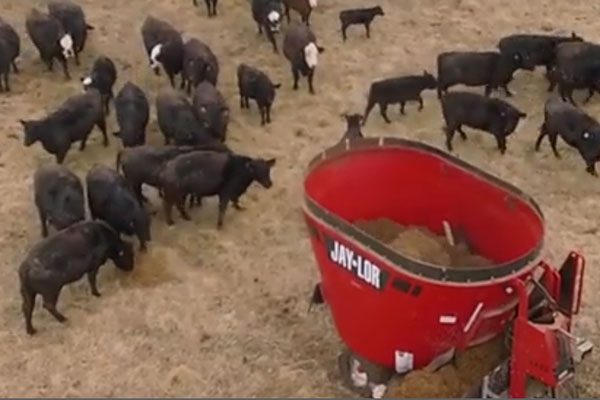Obviously, we cannot expect TMR feeding to be practical or economical for everyone, regardless of herd size or production system. But, as feed and energy costs increase and profit margins decrease, it is rapidly becoming more economical and commonplace for beef cow–calf production for the following reasons.
- Reduced feed cost: Through decreased feed wastage (up to 30%), use of alternative and more cost–effective feed sources, and better allocation of existing feed resources according to stage of production and nutritional requirements.
- Improved animal performance: By feeding a balanced ration according to requirements, reducing ingredient selection and over-consumption, and decreasing competition between animals (growth, reproduction and health).
- Greater management and risk management options: As forage savings from less wastage reduce the amount of land required to produce conserved feed make it available for other uses such as increased grazing or increasing animal carrying capacity, and the ability to use lower cost purchased feeds reduces the dependence on home raised forages and the potential impact of adverse weather such as heavy rain or drought on forage productivity and feed cost.
A TMR mixer is a long life, depreciable asset, that simultaneously decreases feed cost and increases animal productivity (revenue), with the cost being amortizable over numerous years, its operational life being a function of how much it is used each year. Yet, it can be depreciated against taxable income, as required, providing further value.
Understandably, it is a challenge to calculate the net value of adding a TMR mixer to a traditionally fed beef cow–calf operation. However, the value of owning a TMR mixer will increase as:
- It replaces more basic methods of feeding long forage,
- when forage quality is relatively poor,
- purchases of supplemental feeds are high,
- and there are good opportunities for buying a range of alternative feeds, and especially by–product feeds, in the area.
 As a start, it appears reasonable to assume that the annual cost of conserved and purchased feeds should be able to be reduced by a minimum of 10 to 15 percent. On top of that, depending on the current level of management and feed quality, animal performance, measured as lbs of calf produced per year, generally increases at a minimum on the order of 5 to 15 percent. This measure will account for the combined improvements in conception rate, weaning rate, weaning weight, and pre–conditioning growth rate.
As a start, it appears reasonable to assume that the annual cost of conserved and purchased feeds should be able to be reduced by a minimum of 10 to 15 percent. On top of that, depending on the current level of management and feed quality, animal performance, measured as lbs of calf produced per year, generally increases at a minimum on the order of 5 to 15 percent. This measure will account for the combined improvements in conception rate, weaning rate, weaning weight, and pre–conditioning growth rate.
Thus it seems reasonable to conclude that a conservative estimate for the annual economic value for a TMR mixer on a beef cow–calf operation could be calculated as 10 to 15% of the value of all conserved and purchased ingredients (less free choice salt and range mineral) fed per year, plus 10 to 15% of the current value of calves marketed. Returns from potential expansion of operations and other savings could then be added. In the end, if a new Jaylor mixer does not pencil out, perhaps a good used or reconditioned one will. In any case, remember to buy the best mix(er) possible, Jaylor … Because Nutrition Matters®.


